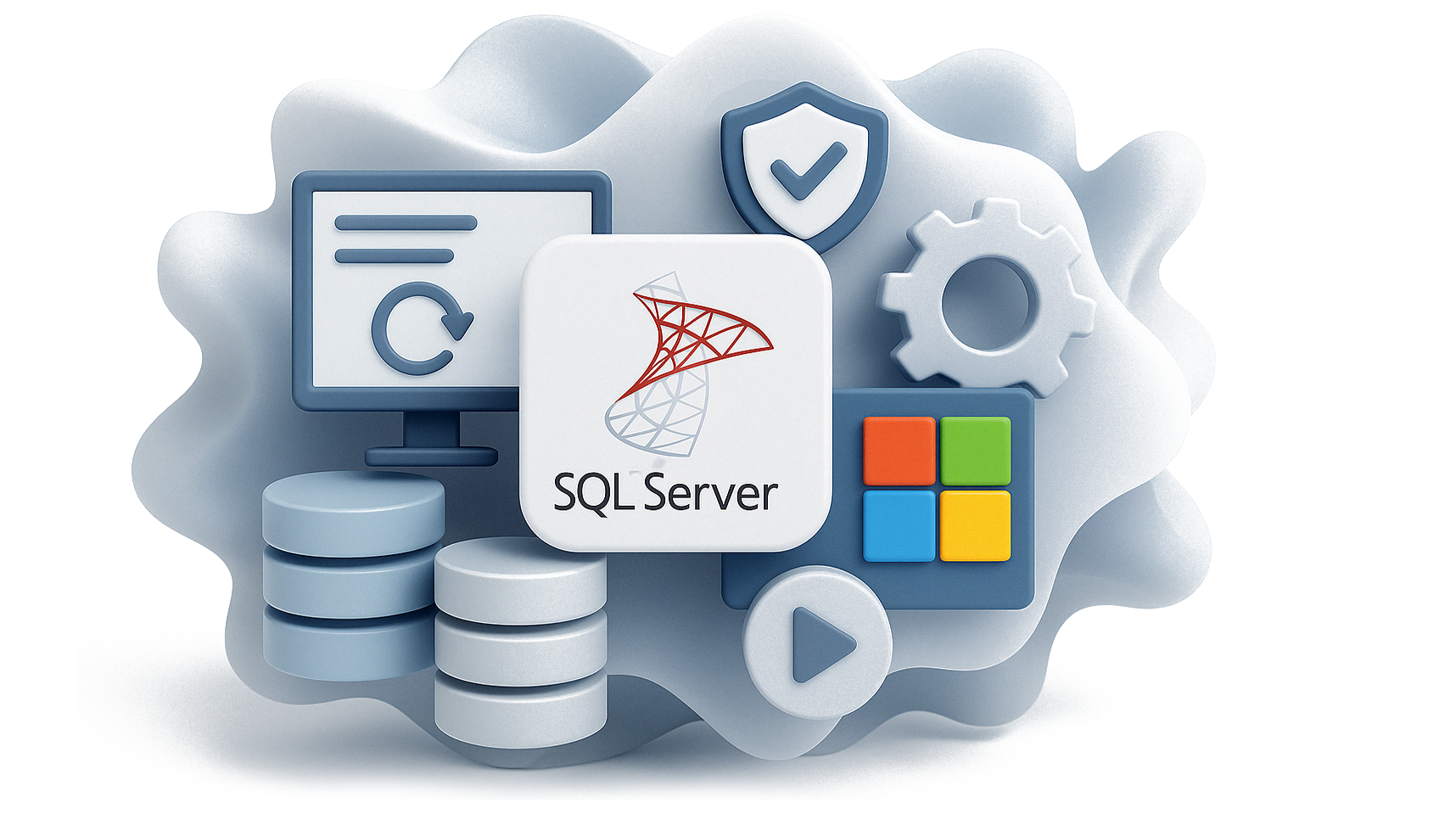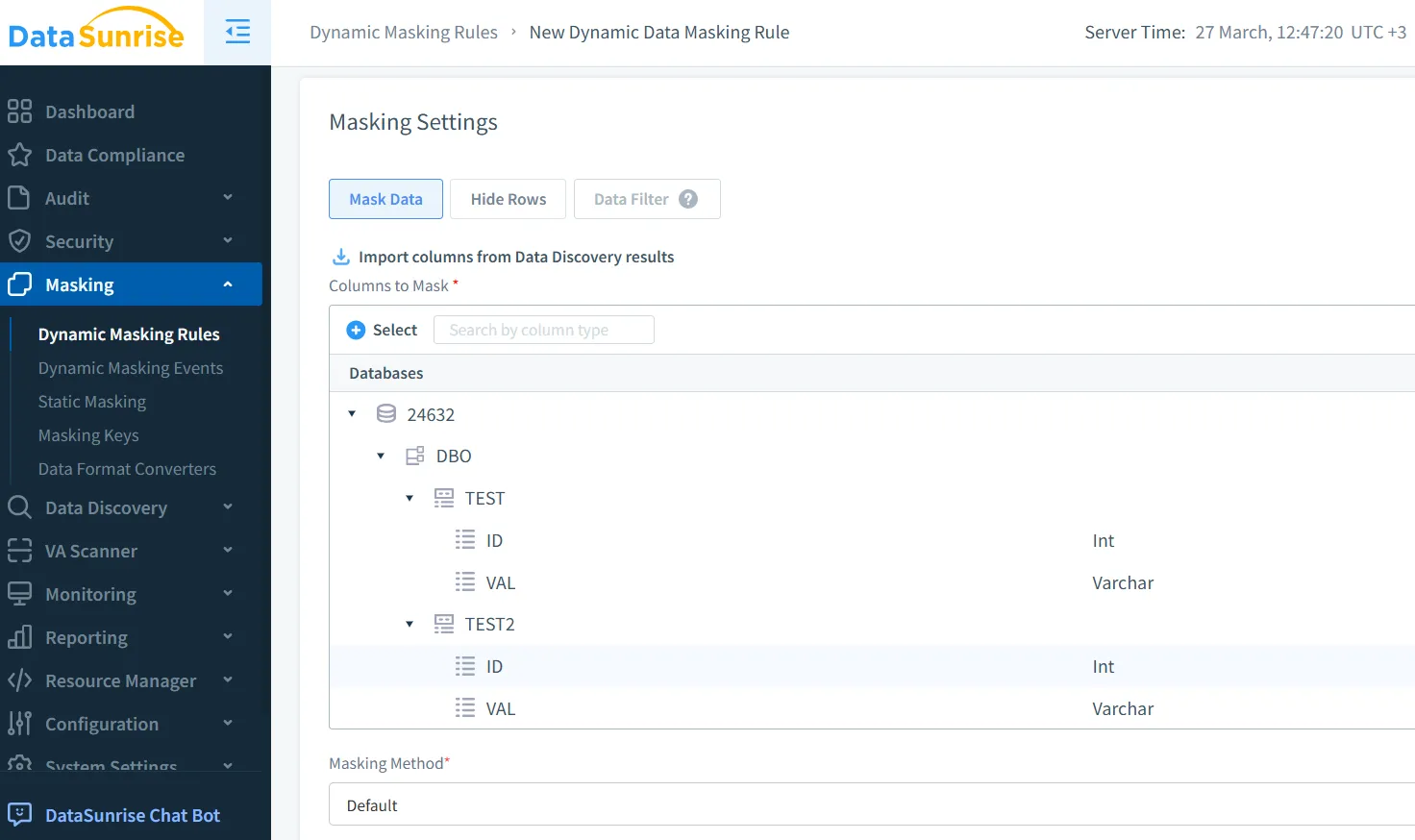
Microsoft SQL Server Data Compliance Automation

Microsoft SQL Server offers a range of built-in features that help organizations streamline their data compliance efforts. These features primarily focus on audit, security, and sensitive data protection, making it easier for businesses to comply with regulations such as GDPR, HIPAA, and PCI DSS. In this section, we'll explore these native features and highlight how they help organizations achieve a high level of compliance.
SQL Server Audit Logs
SQL Server provides built-in audit logging capabilities that enable administrators to track database events. These logs capture key database activities, such as login attempts, data access, and changes to database structures. This foundational auditing capability is essential for maintaining compliance with regulations that require traceability of data access. More information can be found in the SQL Server Audit documentation.
To configure SQL Server audit logs, you need to define an audit specification. Below is an example of how to set up auditing using SQL Server Management Studio:
CREATE SERVER AUDIT Compliance_Audit
TO FILE (FILEPATH = 'C:\AuditLogs\');
CREATE SERVER AUDIT SPECIFICATION Compliance_Audit_Spec
FOR SERVER AUDIT Compliance_Audit
ADD (FAILED_LOGIN_GROUP),
ADD (SUCCESSFUL_LOGIN_GROUP);
ALTER SERVER AUDIT Compliance_Audit
WITH (STATE = ON);
This setup captures failed and successful login attempts, which are crucial for tracking access to sensitive data. Regular review of these logs can help organizations ensure compliance with security and regulatory requirements. You can find more details on auditing with SQL Server in the SQL Server Audit Records guide.
Example of Audit Log Entry
2025-03-12T10:15:30 INFO [SQLServer] User admin executed query SELECT * FROM sensitive_data;
Such entries provide the necessary traceability for compliance audits. However, to achieve deeper compliance automation, organizations often need to augment these native features with additional capabilities, especially around data masking and continuous compliance monitoring.
Dynamic Data Masking
Dynamic Data Masking (DDM) is another essential feature in SQL Server that helps protect sensitive data by applying masks to it at runtime. This feature prevents unauthorized users from viewing sensitive information, such as credit card numbers or personal identification details, without altering the underlying data. More information is available on the Microsoft Dynamic Data Masking page.
To configure Dynamic Data Masking, use the following SQL script to apply masks to sensitive columns:
CREATE TABLE EmployeeData (
EmployeeID INT,
Name NVARCHAR(100),
SSN NVARCHAR(11) MASKED WITH (FUNCTION = 'DEFAULT()'),
CreditCardNumber NVARCHAR(16) MASKED WITH (FUNCTION = 'Partial(0, 4, "X", 4)')
);
With this setup, SQL Server dynamically masks the SSN and CreditCardNumber columns for unauthorized users, while allowing authorized users to view the full data. For more on data masking, check the available guides.
Example of Data Masking
Original SSN: 123-45-6789
Masked SSN: XXX-XX-6789
While SQL Server's native features like audit logging and dynamic masking lay a solid foundation for compliance, they may not fully automate compliance processes in complex environments. This is where third-party solutions, such as DataSunrise, come into play.
DataSunrise Enhancements for Compliance Automation
Zero-Touch Data Compliance Automation
DataSunrise extends SQL Server’s native capabilities by introducing a Zero-Touch Data Compliance Automation solution. This solution is designed to simplify and accelerate the process of achieving compliance across multiple regulations, including GDPR), HIPAA, and PCI DSS. With DataSunrise, organizations can leverage No-Code Policy Automation and Auto-Discover & Mask features to enforce compliance rules without manual intervention. For additional insights, check out the Compliance Manager.

For example, once DataSunrise is deployed, it can automatically detect sensitive data across SQL Server environments and apply the appropriate compliance policies without any manual configuration. This Zero-Touch approach eliminates the need for constant updates and manual policy adjustments, saving time and reducing the risk of human error.
Benefits of DataSunrise’s Zero-Touch Automation
- Streamlined Compliance Workflows: Automated data discovery and policy enforcement speed up the compliance process.
- Enhanced Audit Preparation: Continuous monitoring and real-time policy enforcement ensure your data is always compliant.
Adaptive Intelligence for Continuous Compliance
DataSunrise uses Adaptive Intelligence to provide ongoing regulatory alignment with frameworks such as GDPR, HIPAA, and PCI DSS. This feature includes Machine Learning Audit Rules that automatically adjust to changes in data environments, ensuring that compliance gaps are identified and closed in real time. Learn more about automated compliance reporting.
For example, the system can continuously scan for new sensitive data and automatically update compliance rules to reflect any changes in regulatory requirements. This means that businesses do not need to manually adjust their security policies whenever a new regulation or update is released.
Real-Time Threat Detection and Data Masking
In addition to audit and compliance features, DataSunrise enhances SQL Server’s data protection capabilities with Real-Time Threat Detection and Dynamic Data Masking. These features go beyond simple data encryption by identifying and reacting to suspicious behaviors in real time, such as unauthorized data access or abnormal query patterns. Learn more about Threat Detection.
With Dynamic Data Masking, organizations can protect sensitive data while allowing authorized users to access it without modification. This approach provides a higher level of security by reducing the likelihood of exposing sensitive data to unauthorized users. For more details, see the Dynamic Masking guide.

This function applies a dynamic mask to sensitive data, ensuring that unauthorized users see only masked values, while authorized users can access the full data.
Cross-Platform Compliance and Reporting
One of the key advantages of DataSunrise is its ability to provide Seamless Multi-Environment Coverage. The platform supports Hybrid/Heterogeneous Environments, allowing organizations to manage compliance across SQL Server, NoSQL, and cloud-based databases from a single interface. With this centralized approach, businesses can simplify their compliance workflows and ensure they meet regulatory standards across their entire data ecosystem. For more on cross-platform compliance, check the resources available.
DataSunrise also supports Automated Compliance Reporting, which generates detailed audit trails and compliance reports at the click of a button. This eliminates the manual effort involved in preparing audit documentation, further reducing the risk of compliance gaps.
Benefits of Cross-Platform Compliance Coverage
- Comprehensive Regulatory Coverage: Supports multiple database types and environments.
- Audit-Ready Reporting: Automatically generate reports for regulatory compliance audits.
Competitive Differentiation: Autonomous Compliance
Unlike other solutions that require constant tuning and manual updates, DataSunrise provides Autonomous Compliance Orchestration, which automatically adapts to changes in both data environments and regulations. This eliminates the need for constant oversight and ensures that compliance is continuously maintained without human intervention.
Conclusion
Microsoft SQL Server offers powerful native features for data compliance, including audit logging and dynamic data masking. However, these features may require additional configuration and manual intervention to fully automate compliance processes. By integrating DataSunrise, organizations can significantly enhance their compliance automation efforts, benefiting from zero-touch policy enforcement, real-time threat detection, and continuous regulatory alignment. With DataSunrise’s Autonomous Compliance Orchestration, businesses can ensure they remain compliant with all major regulations, while also improving operational efficiency and reducing compliance risks. Explore DataSunrise’s advanced tools and schedule a demo to experience autonomous compliance management by visiting the DataSunrise demo page.
